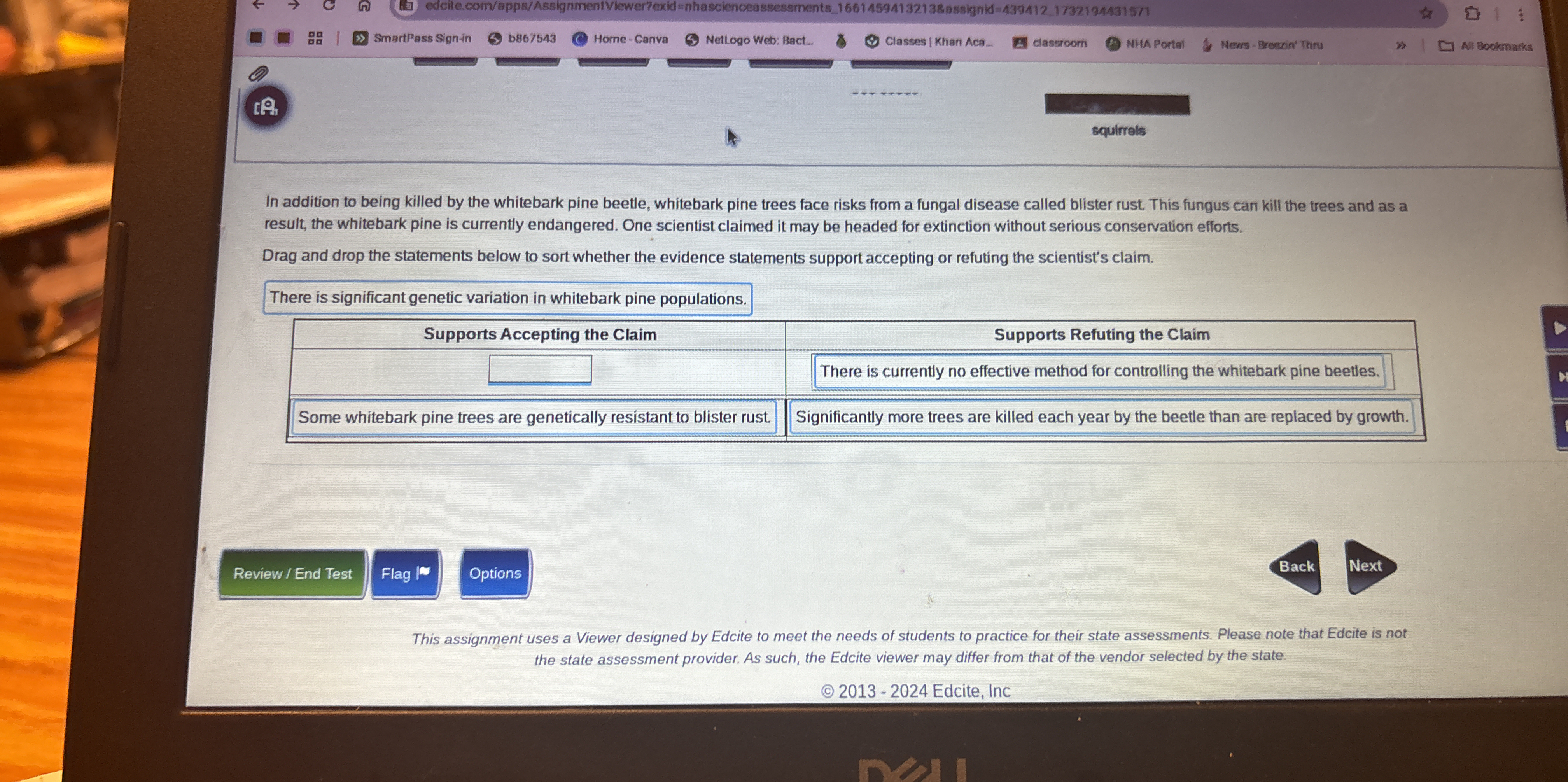In addition to being killed by the whitebark pine beetle, what are the risks that whitebark pine trees face from a fungal disease called blister rust, and how do certain statements... In addition to being killed by the whitebark pine beetle, what are the risks that whitebark pine trees face from a fungal disease called blister rust, and how do certain statements support or refute the claim about the tree's endangered status?

Understand the Problem
The question is about evaluating statements regarding the whitebark pine trees' endangered status due to various threats. It seeks to categorize evidence as either supporting or refuting the claim about their conservation status.
Answer
Genetic resistance and variation support refuting the claim; lack of control methods and beetle impact support accepting the claim.
Statements supporting accepting the claim include the lack of effective methods for controlling the beetles and the high death rate caused by beetles. Statements supporting refuting the claim include genetic resistance to blister rust and genetic variation among whitebark pine populations.
Answer for screen readers
Statements supporting accepting the claim include the lack of effective methods for controlling the beetles and the high death rate caused by beetles. Statements supporting refuting the claim include genetic resistance to blister rust and genetic variation among whitebark pine populations.
More Information
Whitebark pine trees face significant threats from a combination of factors including beetle infestations, climate change, and fungal infections. Genetic resistance in some trees offers hope for survival.
Tips
A common mistake is assuming genetic resistance means all trees are safe, rather than only some.
Sources
- Threatened Species Status With Section 4(d) Rule for Whitebark Pine - federalregister.gov
- White Pine Blister Rust - Invasive Species Centre - invasivespeciescentre.ca
AI-generated content may contain errors. Please verify critical information